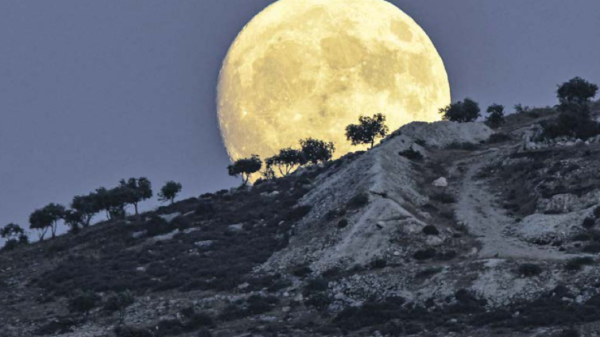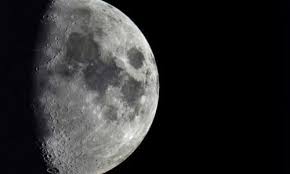Most of moon’s atmosphere is from meteorite strikes – study

- Update Time : Saturday, August 3, 2024

The mystery of how the moon’s thin atmosphere is produced has been solved, according to scientists studying lunar samples brought back by the Apollo missions. Discovered in 1969 and the 1970s, when Nasa sent astronauts to the moon, the lunar atmosphere is much thinner than Earth’s, and is thought to arise from space weathering of the moon’s surface.
Now experts say they have unpicked the relative contributions of such processes to the lunar atmosphere, revealing meteorite impacts to be the major player.

“Our findings provide a clearer picture of how the moon’s surface and atmosphere interact over long timescales, enhance our understanding of space weathering processes,” said Dr Nicole Nie, a co-author of the new study who is based at the Massachusetts Institute of Technology’s Department of Earth, Atmospheric, and Planetary Sciences.
Writing in the journal Science Advances, Nie and colleagues describe how the lunar atmosphere must be constantly replenished as its atoms are continuously being lost to space – primarily because of the Moon’s weak gravity – or trapped on the lunar surface.

While ultraviolet photons from the sun can re-release the latter, the researchers say replenishment of the atmosphere is thought to rely on atoms being released from within lunar minerals – either via vaporisation by meteorite impacts, or by solar wind sputtering, a process in which charged particles from the sun hit the moon and eject atoms.
But which of the two dominates has remained unclear, with data from Nasa’s Lunar Atmosphere and Dust Environment Explorer, launched in 2013, suggesting both are at play.

Nie and colleagues unpicked the conundrum by studying the diferent forms, or isotopes, of potassium and rubidium within 10 samples of lunar soil from the Apollo missions. The team say meteorite impacts and solar wind sputtering both favour the release of lighter forms of the elements – however, the actual proportion of heavy to light isotopes
that end up in the lunar atmosphere and soil would difer depending on the process. “After measuring the isotopic compositions of lunar soils, we built a mathematical model taking into account various space weathering processes, and solve for the contribution of each of them by matching the measured isotopic compositions,” said Nie.
The results suggest that about 70% of the moon’s atmosphere is down to impact Most of moon’s atmosphere is from meteorite strikes – study










Leave a Reply